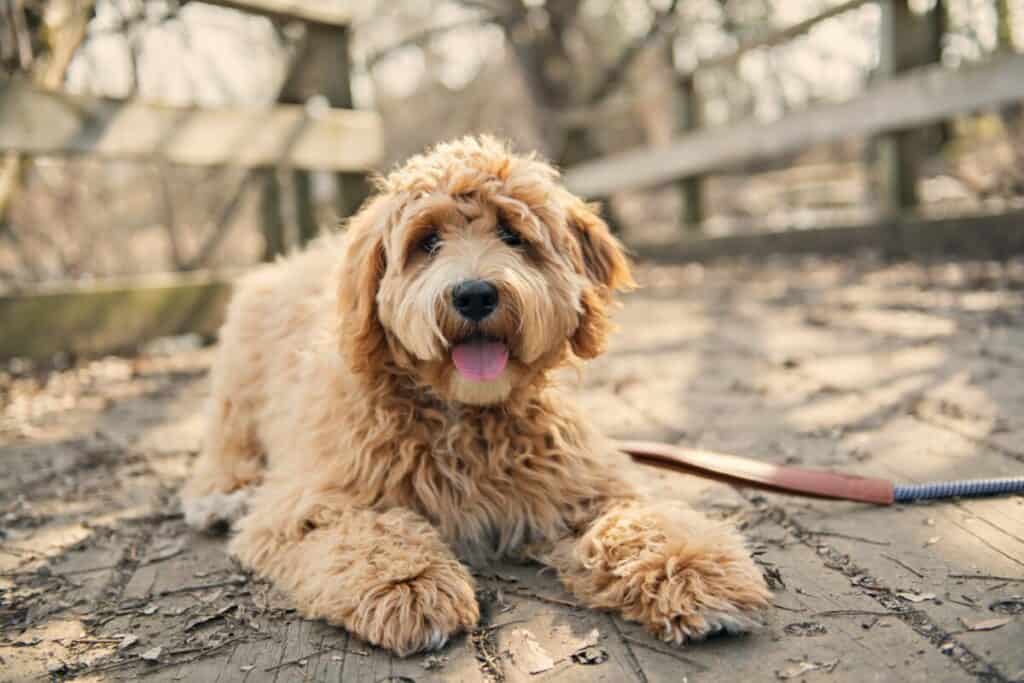
One of the biggest pros of having a Labradoodle is that they are non or low shedding and generally more hypoallergenic than other breeds. That being said, a determining factor of this is coat type. As a trusted breeder of Labradoodles and other poodle mixes for the past eight years and having raised multiple litters of Labradoodles myself, I can tell you about some ways you can try to predict the kind of coat that your Labradoodle puppy will have.
To determine the coat type of a Labradoodle puppy, one must look at a few aspects of the puppy. First, the puppy's muzzle or face should be looked at to see if there are curls, crimps, or waves. Another indicator of coat type is the texture of both the puppy and its parents' coats.
Before we get further into discussing how to tell what coat type your puppy will have, let's talk about the different coat types. We will also talk about how genetics influence coat type and how you can choose a generation of Labradoodle to get the coat type that you are looking for.
Types of Labradoodle Coats
There are three main types of Labradoodle coats, ranging from curly to flat. These coats all have different pros and cons as well as different grooming needs. Let's talk about each coat type and what it means for your puppy.
Wool
The wool or curly coat is the coat that most closely resembles a poodle. It is called the wool coat because it looks like the curly, dense coat of a sheep. This type of coat is not very common with F1 or F2 Labradoodles because they get only 50% of their genetic code from a poodle. Wool coats require the most extensive grooming regimen. Wool-coated puppies will need to get haircuts every six weeks in addition to their daily brushing.
Fleece
A fleece coat is an in-between type of coat, making it the middle ground between a curly and a flat coat. This kind of coat is probably the most common in Labradoodles, across all generations. Fleece coats are mostly non-shedding and typically what you think of when you think “Labradoodle”. If you have a puppy with a fleece coat, you will need to pay close attention to the hair around its ears and collar when brushing them because it can easily get matted.
Hair
The hair coat most resembles the coat of a Labrador retriever. Labradoodles that have this kind of coat will probably shed the most, but that doesn't mean that they are any less hypoallergenic than the others. Recent studies have shown that it is not actually the dog hair, but dandruff that is the cause of most dog allergies.
Flat-coated puppies will have fewer grooming needs than their wool or fleece counterparts, but will still need to be brushed out regularly. Although flat-coated doodles have the same temperament and characteristics as their siblings, they are oftentimes less desirable as a result of the texture of their coats.
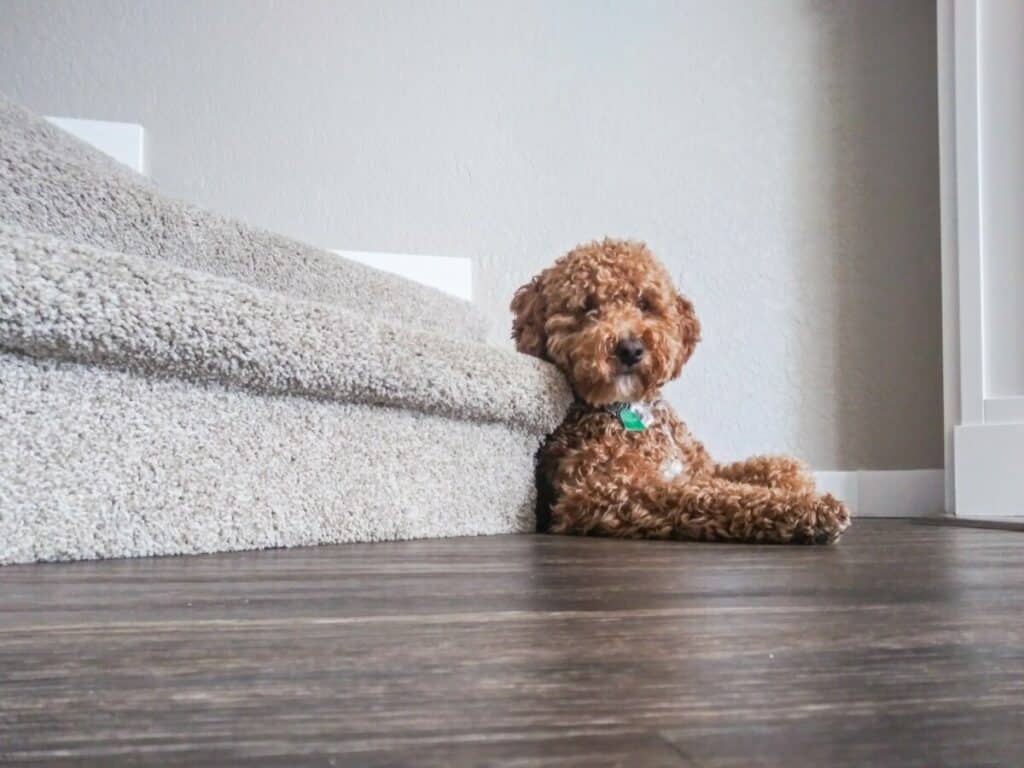
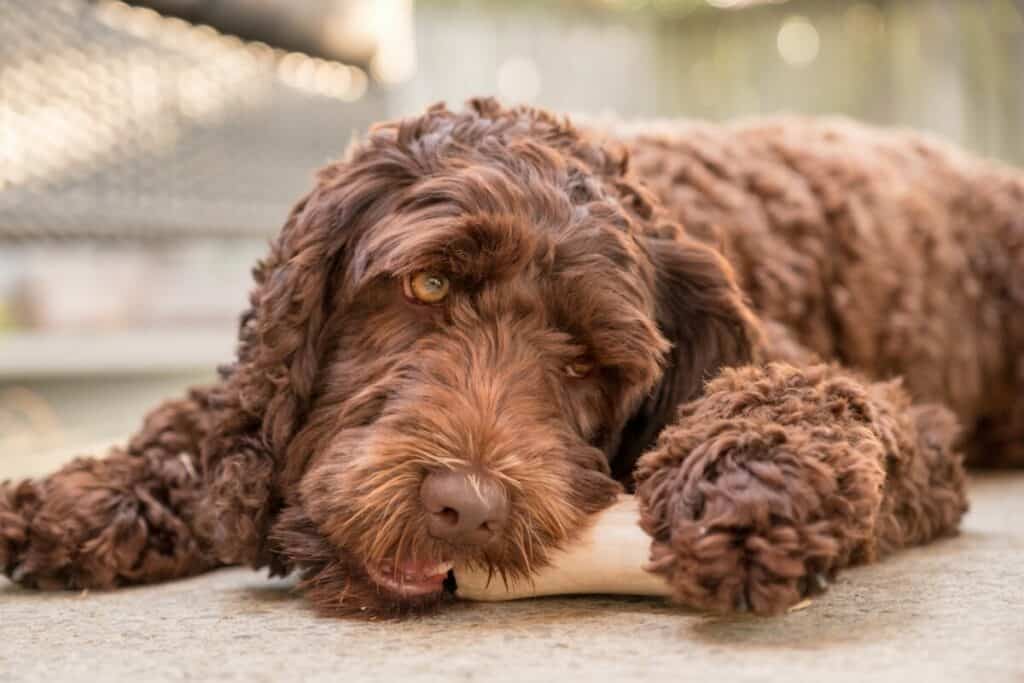
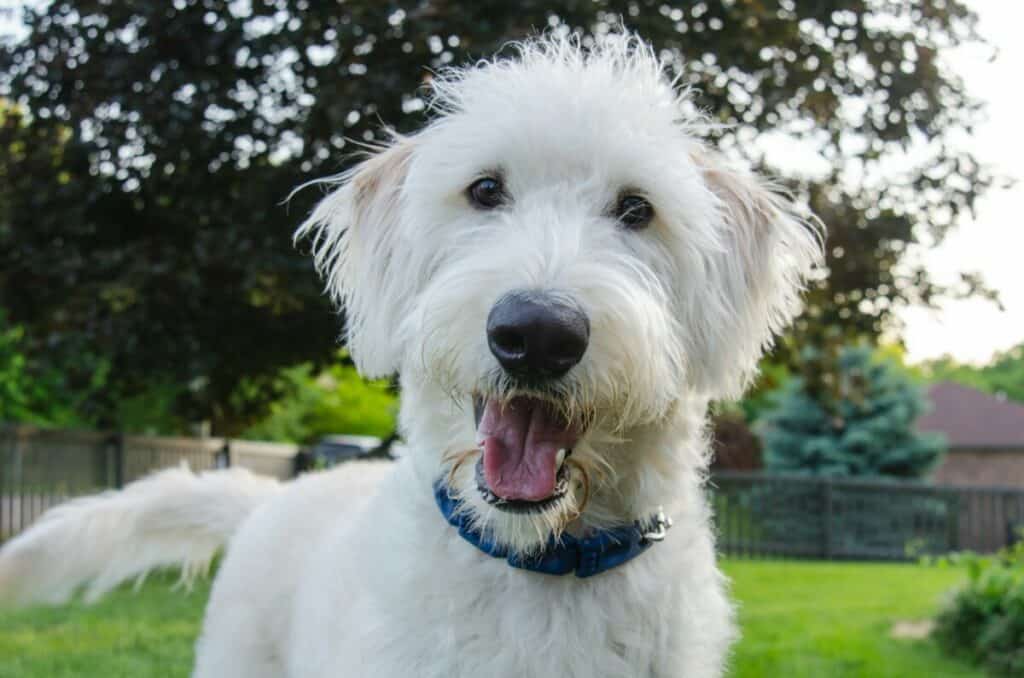
How to Tell What Coat Your Puppy Will Have
The first and easiest step to determine what type of coat your puppy will have is to look at the fur around their face or muzzle. This area is usually where the hair starts to show the most curl. Often, puppies that grow to have curly or wavy coats have crimps or waves in these areas. If your Labradoodle puppy is flat coated, they may have a slight mustache or beard, but the hair will be straight, not curled or crimped.
Another way to tell the type of coat of your Labradoodle puppy is to look at and feel the texture of their coat. Puppies are born with a softer and fluffier puppy coat that helps protect them and help them regulate their body temperature while they grow and mature.
Although they will eventually lose this puppy coat and be left with a coarser coat, puppies that are flat-coated generally start out with a coarser and shorter puppy coat. Flat-coated puppy coats will also appear different in the fact that their coat looks like it has an undercoat with a longer more wispy top coat that resembles a wire coat.
If you cannot tell what kind of coat your puppy will have from these indicators, you may want to take a look at its parents. This tactic won't work well if your puppy is an F1 Labradoodle that is a mix between a Poodle and Labrador Retriever because you won't have a good base of reference, so is probably best used if you have a different generation of Labradoodle.
If your puppy's Labradoodle parent has a tighter, curlier coat, the chances are higher that your puppy will have a curly coat as well.
All of these tactics are good ways to get an idea of what your puppy's coat may look like but can only be labeled as educated guesses as puppy coats may change after they lose their puppy coat.
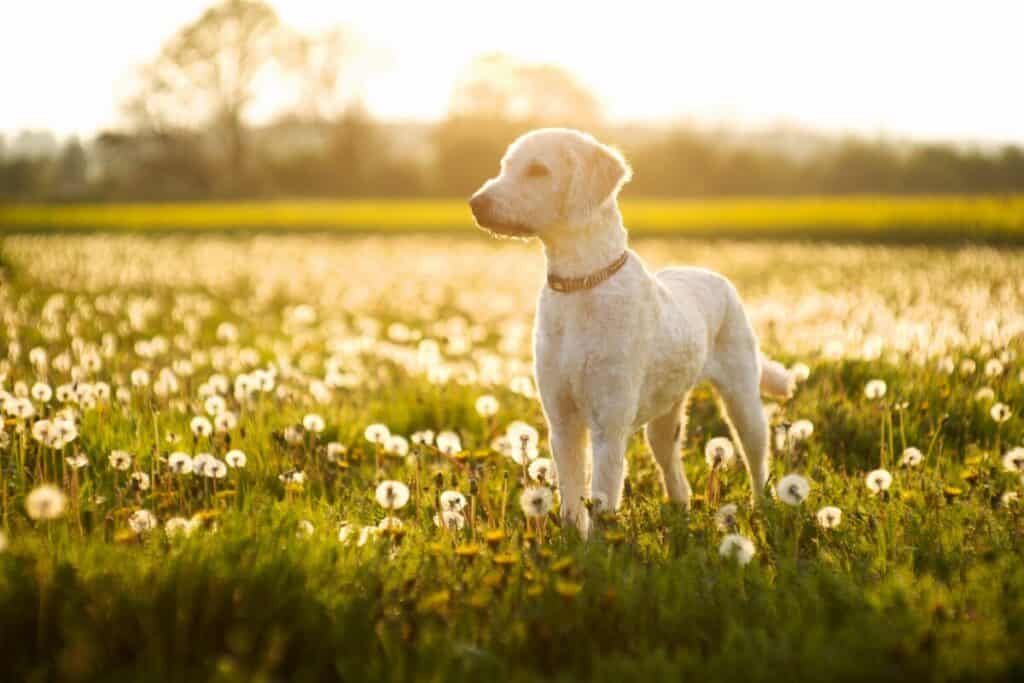
Why Does the Generation Matter?
The generation of a Labradoodle puppy is a huge factor in the kind of coat they will have. If a puppy has a higher percentage of poodle DNA, it will have a curlier coat. This makes F1BB or F2BB Labradoodles the puppies that would have the curliest coats.
If you can't get a look at your puppy or are looking for a certain type of coat before buying a Labradoodle puppy, the generation and genetics of the dog can help you get a good idea of what type of fur they will have.
Labradoodle Generations Chart
| Parent 1 | Parent 2 | DNA Percentage- Poodle | DNA Percentage- Labrador Retriever | |
| F1 Labradoodle | Labrador Retriever | Poodle | 50% | 50% |
| F1B Labradoodle | F1 Labradoodle | Poodle | 75% | 25% |
| F1BB Labradoodle | F1B Labradoodle | Poodle | 87.5% | 12.5% |
| F2 Labradoodle | F1 Labradoodle | F1 Labradoodle | 50% | 50% |
| F2B Labradoodle | F2 Labradoodle | Poodle | 62.5% | 37.5% |
| F2BB Labradoodle | F2B Labradoodle | Poodle | 81.25% | 18.75% |
Will my Labradoodle Puppy's Coat Change?
A Labradoodle puppy's coat will change when they lose it to make way for its adult coat. This change usually happens when they are anywhere from six months to a year old. During this transition period, it is extra important to remain on top of grooming, as puppy fur can easily get matted as old hair gets caught in the new fur.

Cindy is a prolific writer and online researcher who can't imagine life without dogs. There is scarcely a dog topic she has not researched or written about. Her love for dogs and helping dog parents is evident by the thousands of dogtemperament.com visitors who read her articles monthly. Most of all, each topic Cindy writes on helps forge a stronger bond and understanding between her and her happy Catahoula Leopard Dog Jossie.